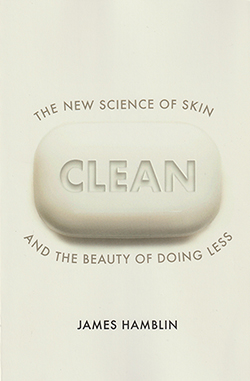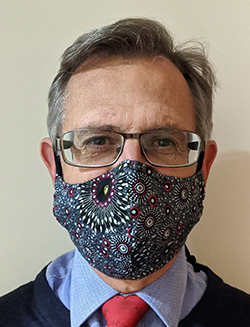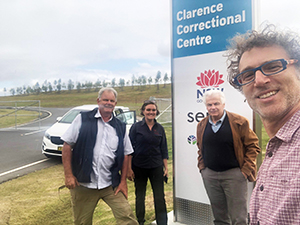
Book Review - Clean
Clean
By James Hamblin
The Bodley Head 280pp
Book Review by Robin Osborne
Doubtless he will be popularised as the doctor who doesn’t wash – just one-part true – but there is much more to this fascinating book, as the sub-title suggests: “The new science of skin and the beauty of doing less.”
Let it be noted that Hamblin is not just any doctor but a lecturer at the Yale School of Public Health, a specialist in preventive medicine and a staff writer at The Atlantic. He can certainly write, and to quote someone else who can, the revered Dr Siddhartha Mukherjee (The Emperor of All Maladies, and much more), he has penned an “illuminating and engaging book”.
- Details
- Written by: Robin Osborne
Modern Breast Cancer Management
Come and join your colleagues for the NorDocs webinar on Breast cancer management and the Multidisciplinary team. (Link to slides).
Speakers are Dr Julan Amalaseelan (Radiation Oncologist), Dr Rob Simon (General Surgeon) and Dr Amy Scott (Medical Oncologist).
Our facilitators are Dr Nina Robertson (GP) and Dr David Guest (GP).
Three cases of breast cancer will be discussed with best practice approaches to the management of each one.
Key Learning Points
- how to optimise investigation and workup of the suspected breast cancer patient
- the complexities of breast cancer management with multimodal treatments.
- the changing management of the axilla and the aims of axillary staging.
- the limitations of hormone therapy due to hormone deprivation symptoms
- the timing and appropriateness of breast reconstruction in certain situations which is highly individualised and dependent on other therapies.
- the common side effects of chest wall/breast radiotherapy
- the management of acute radiation skin reactions
|
|
- Details

Every picture tells a story
UNCONDITIONAL STORIES - exhibition at Northern Rivers Community Gallery
Ballina District Hospital + TAFE NSW Lismore Art Program
12 August - 18 October 2020
Robin Osborne reviews a narrative art project where healthcare patients met TAFE students to go on a personal journey through sickness, healing and self-discovery.
The dramatic image is surely an aerial view of landscape, perhaps an Aboriginal work characterised by the ‘helicopter’ view commonly seen in Central Desert paintings. The low hills, tinged red-pink by early morning or afternoon sun, are fringed by a body of dark water, the thick swirls of blue and red paint applied dramatically.
Yet the painting’s title, The Silk Road, bears no relationship to Australia… or so it seems.
Rather than looking externally for inspiration the artist, TAFE student Mark Alcock, gazed inside the body for inspiration, portraying the devastating impact of an auto-immune disease named Behçet's Disease on a local man who had battled this condition for years.
- Details
- Written by: Robin Osborne

Editorial: COVID-19 continues to dominate our lives
After the initial wave and restrictions, life for many North Coast residents returned to some degree of normality. Others lost their jobs, possibly forever, although the full economic impact of this was mitigated to some extent by the Federal government’s emergency financial packages. As time passed and the numbers decreased, restrictions eased and retail and restaurants gradually reopened for business. There seemed to be light at the end of the tunnel.
Some businesses boomed through the crisis. It was a great time to be in the home renovation, surgical supply or cleaning businesses, with orders coming in thick and fast.
Then the second wave hit Victoria. While not totally unexpected it was literally a shock to the system. We became used to seeing Premier Dan Andrews trudge out in front of the TV cameras for the daily briefing to disclose the latest number of cases and deaths. The relentless rise weighed heavily on everybody’s mind and for some it brought back memories of the nightly television reports from the late 60s and 70s of the daily body count during the Vietnam war.
The infection spread like the bush fires of summer 2019. There were spot fires in a few suburbs, then a city and finally a state was in full lockdown. There was fear of contagion to other parts of the country and the walls went up on the State borders.
- Details
- Written by: David Guest
Read more: Editorial: COVID-19 continues to dominate our lives

From the inside out
Handover of medical care in the North Coast’s mega-prison
Dr Andrew Binns visits Australia’s newest, biggest and potentially most controversial prison.
The City of Grafton is a place of mixed blessings. Famed for its annual Jacaranda Festival, when street trees burst into purple blossom, it is also the place where a stone-walled jail, opened in 1862, drew criticism over the years for the cruelty of its warders.
Now the area is becoming famous for the establishment, at a nearby location, of Australia’s newest and biggest prison, the Clarence Correctional Centre (CCC), a 1700-prisoner facility that state MP Chris Gulaptis (Nats, Clarence) hails as having “world class facilities” and offering a “responsible prisoner model” offering job search prospects upon release
Gone are the days when arrivals at Grafton jail were forced to run the gauntlet of baton wielding warders positioned to show new prisoners who was boss. The ritual was known as the “reception biff” and drew condemnation from the Nagle Royal Commission into NSW prisons.
- Details
- Written by: Andrew Binns
Page 45 of 177
















